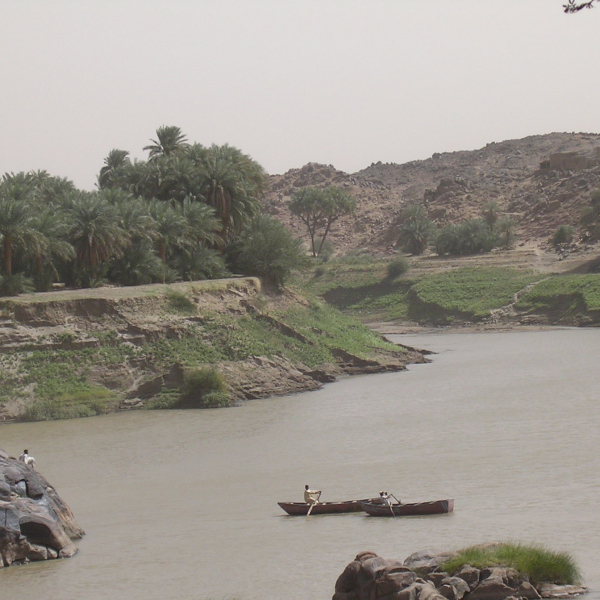With the help of start-up funding from the Jutta Vogel Foundation, the first scientific exploration was launched in spring 2004 to investigate the least known section of the Nile to date: the area of the Fourth Cataract in northern Sudan. The reason for this is the plan of the government in Khartoum to build a huge dam by 2008 to generate energy, in front of which a 170 km long lake is to be built. The waters of the Nile will then have flooded thousands of archaeological sites from the Palaeolithic period to the Christian, then Islamic Middle Ages and modern times, along with the fields and gardens of the Manasir who live here. As a result, a rich treasure trove of prehistoric and early historical settlements, graves and rock paintings has been lost, as has the last agricultural system of a cataract zone in the desert based on intensive irrigation. The project, led by Dr. Hans-Peter Wotzka, aims to explore an area that, at around 40 km², comprises the largest area of the Nile islands that will sink into the reservoir in the future, as well as the right bank section at this height. The Africa Research Unit of the Institute of Prehistory and Early History at the University of Cologne is thus part of an international rescue program to which the Sudanese Antiquities Service has called on all research groups and institutions that have been active in the country for years. Following initial support from the Jutta Vogel Foundation, the German Research Foundation (DFG) has now approved a three-year project. This will run under the umbrella of the Collaborative Research Center “Cultural and Landscape Change in Arid Africa”, in which scientists from Cologne have been working in various regions of Africa since 1995. The first results of the prospection are already available in the form of 210 newly discovered archaeological sites. Prehistorians, archaeologists, geographers and Egyptologists will be involved in their excavation and further processing in order to take advantage of the last chance to open up this special “favored area”, which has been inhabited by humans from prehistoric times to the present day. The prospect of learning more about the natural area and the way in which people have used it for themselves seems realistic. So far we know very little about this area of the Fourth Cataract, although in the second millennium BC the Nubian kingdom of Kerma and later the territory of the Pharaohs were the direct neighbors. One day, an archaeological-ethnographic museum in El-Mutaga near Debba will make the research results of all the international working groups accessible to the public.


